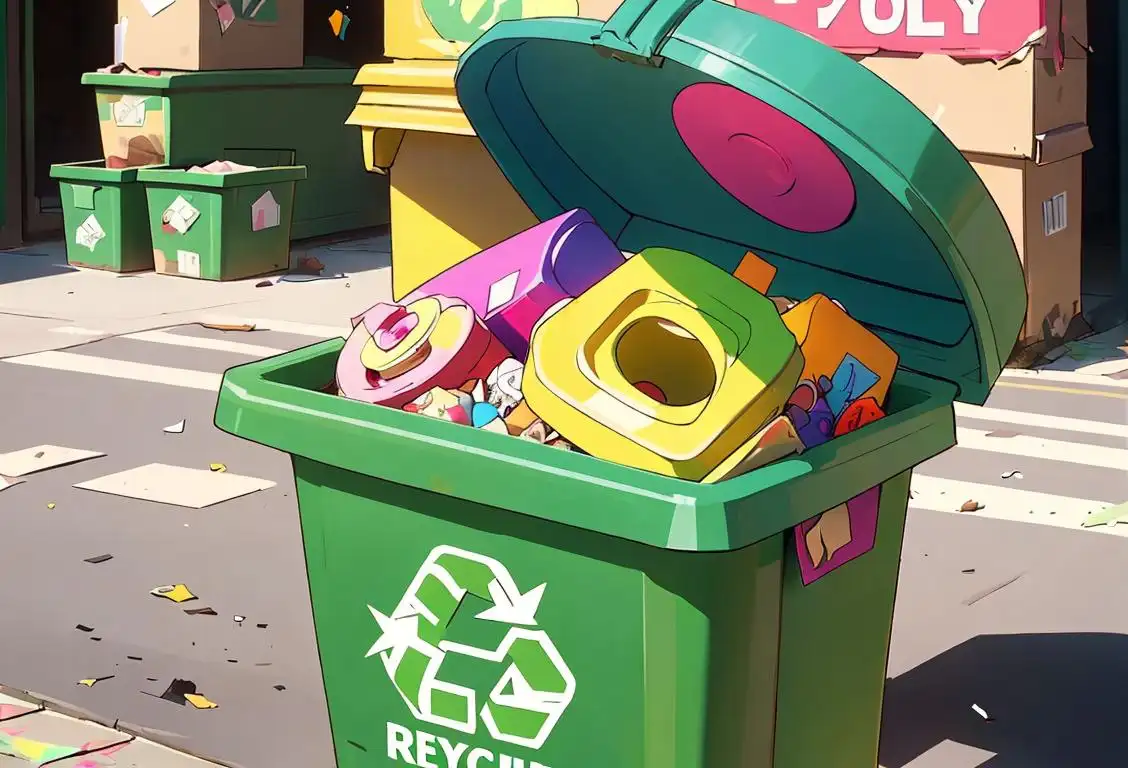National Waste Day

Welcome to National Waste Day, where we celebrate all things waste! This is the day to embrace those leftover pizza crusts, unraveled toilet paper rolls, and anything else that we consider as trash.
When is Waste Day?
It's national waste day on the 5th March.
The History of National Waste Day
Every year on the 5th of March, we gather around the dumpster fire and honor the colossal messes and everyday clutter that we create. The origin of this unique holiday dates back to 2016 when the internet exploded with 17 mentions of National Waste Day.
Ever since then, people have been coming together, not only to acknowledge the waste they produce but to find creative ways to reduce, reuse, and recycle. It's a day when we can reflect on our environmental impact and strive to be more conscious of our resource consumption. From trashy memes to epic garbage art, National Waste Day has become a symbol of our commitment to Mother Earth.
History behind the term 'Waste'
14th century
Introduction of the term
The term 'waste' originated in the late 14th century from the Old North French word 'wast' meaning 'desolate' or 'uncultivated land'. It referred to barren or uninhabited areas that were not utilized for agricultural or residential purposes. The term eventually expanded its meaning to include any material or substance that was discarded or regarded as useless.
18th century
Emergence of waste management practices
During the 18th century, as urbanization and industrialization grew, waste management practices began to develop. The rise of cities led to an increase in waste production, prompting the need for organized disposal systems. Early methods included dumping waste into rivers, burying it in landfills, or simply burning it. However, these practices often resulted in pollution and health hazards.
19th century
Industrial revolution and environmental concerns
The 19th century marked a significant period of industrialization and technological advancement. With the rapid growth of factories and manufacturing processes, waste generation soared to unprecedented levels. This raised public awareness about the environmental and health impacts of uncontrolled waste disposal. Efforts to develop more sustainable waste management systems gained momentum.
20th century
Emergence of waste reduction and recycling
As the 20th century began, waste reduction and recycling practices gained recognition as crucial elements of waste management. Governments and organizations worldwide started implementing strategies to promote recycling and reduce waste in landfills. Innovations in recycling technologies and the introduction of recycling programs in many countries have since helped mitigate the environmental impact of waste.
21st century
Focus on sustainability and waste minimization
In the 21st century, the emphasis on waste sustainability and minimization has grown even stronger. The concept of the circular economy, which aims to maximize resource efficiency and minimize waste generation, has gained widespread attention. Governments, businesses, and individuals are now actively seeking to reduce waste, promote reuse, and adopt more environmentally friendly practices to tackle the global waste crisis.
Did you know?
Did you know that Americans throw away enough office paper each year to build a 12-foot-high wall from Los Angeles to New York City? That's a whole lot of wasted trees!Tagged
awareness fun environmentFirst identified
5th March 2016Most mentioned on
5th March 2016Total mentions
17Other days
Battery Day
Pollution Control Day
Arbor Day
Energy Conservation Day
Penguin Day
Earth Day
Public Lands Day
Bike To Work Day
Tree Planting Day
Clean Air Day









